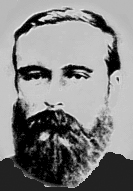Ceylon tea
| Ceylon | |
|---|---|
 | |
| Type | Black |
| Other names | NA |
| Origin | Sri Lanka |
| Quick description | Powerful, light, citrusy crisp taste. |
This article is about black tea from Sri Lanka. For the food service teas, see Ceylon tea (disambiguation).
Ceylon black tea is black tea that is grown in Sri Lanka (which was known as Ceylon before 1972). It has a crisp aroma reminiscent of citrus, and is used both unmixed and in blends. It is grown on numerous estates which vary in altitude and taste.
History

The production of black tea in Ceylon (now Sri Lanka) began after a deadly fungus called Hemileia vastatrix destroyed most of the coffee crop on the island. The coffee plantation owners realized that they needed to diversify. The Loolecondera Estate had long been interested in producing tea in Sri Lanka. James Taylor, one of the fathers of Ceylon Tea, had recently arrived on the Estate and wanted to be there for the sowing of the first tea crops in 1867. It was done on 19 acres of land. James Taylor was already experienced in tea cultivation. He had acquired his knowledge in North India. He carried out different experiements on cultivating tea on the verandah of his estate. He rolled the leafs by hand and fired the oxidized leaves on clay stoves over charcoal fire.
The tea that James Taylor made was delicious and sold for a very good price in the London Auction. The tea craze hit Ceylon. By 1890 tea production was at 22,900 tons up from just a mere 23 pounds between 1873 and 1880.
Until 1971, most of the tea companies in Sri Lanka were British-owned but this soon changed after the Land Reform Act was introduced to reacquire land in foreign hands. Since 1990, a new plan has been devised to share the industry between state-owned companies and privately owned companies.
Ceylon Tea Museum
Sri Lanka Tea Board recently opened a Tea Museum in Hantana, Kandy. Although exhibits are not abundant they do provide a valuable insight into how tea was manufactured in the early days. Old machinery, some dating back more than a century, has been lovingly restored to working order. The first exhibit that greets visitors in the Engine Room on the ground floor of the museum is the Ruston and Hornsby developed diesel and other liquid fuel engines, power for the estates were obtained by water driven turbines.
Museum's "Rolling Room" offers a glimpse into the development of manufacturing techniques with its fascinating collection of rollers. Here the showpiece is the manually operated ' Little Giant Tea Roller'. It Also houses tea shops and a restaurant that give visitors an opportunity to taste and take home fine Ceylon tea.
Tea-growing areas

There are six main tea-producing areas in Sri Lanka:
- Galle, to the south of the island
- Ratnapura, about 55 miles east of the capital Colombo
- Kandy, the low region near the ancient royal capital
- Nuwara Eliya, the highest area that produces the finest teas
- Dimbulla, west of the central mountains
- Uva, located east of Dimbulla
Varieties
- Morawak Korale district tea is grown at up to 2,500 feet
- Kandy district tea is grown at 2,500 feet or above
- Uva district tea is grown at 2,800 feet or above
- Dambulla and Dickoya tea is grown at 3,500 feet or above
- Nuwara Eliya tea is grown at 6,000 feet or above
See also
- Other varieties of Ceylon tea: oolong, white, green.
- Tea industry of Sri Lanka
- James Taylor
- Thomas Lipton
